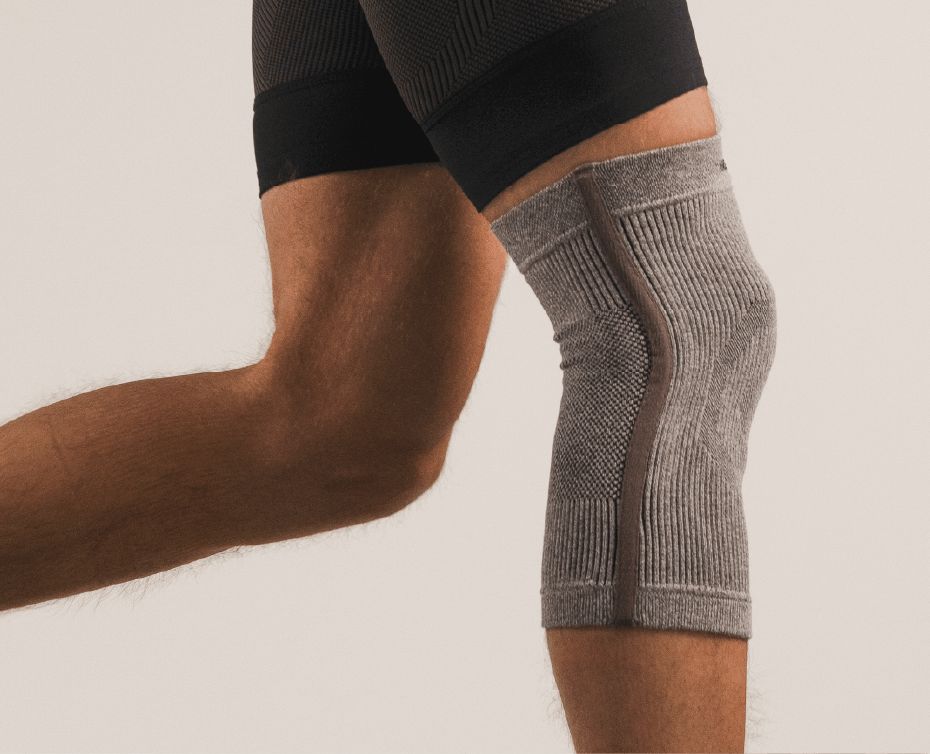Medically Reviewed By | Johannah Gregg, DNP FNP-C
Ankle sprains are among the most common injuries for athletes and anyone who enjoys physical activity. The sharp pain that shoots up your ankle is enough to make anyone wince. A sprain can definitely put a hold on your regular activities, but this injury is treatable. Although sprains can be treated at home, there are treatments available to strengthen the bones from future injuries.
What is an Ankle Sprain?
A sprain happens when the ligaments, the tough bands connecting your bones, get stretched or torn. Your lateral ankle ligaments are the strong bands that hold your ankle bones together. A sprain is when you twist or roll your ankle in a way that stretches these bands beyond their normal limits, causing tears. The severity of a sprain depends on how much ligament has been damaged. A mild sprain might just involve some overstretching, but a severe sprain can be a complete tear or broken bone.
These tears commonly occur on the outer side of your ankle, where the ligaments are most vulnerable. The results can be pain, swelling, and an unpleasant sensation or chronic ankle instability. The pain might be sharp and throbbing right after the injury, then settle into a dull ache. Depending on the severity, you might also experience some instability in the joint. But with proper care, most ankle sprains heal completely within weeks. However, a severe sprain can take months to heal.
Types of Sprained Ankle
Sprained ankles are categorized into three different grades, depending on how badly those ligaments are stretched or torn. Let’s discuss them in detail:
Grade I Ankle Sprains
This is the least serious type of ankle sprain. The ligaments are slightly torn or just overstretched, causing mild pain and tenderness. You might also experience slight swelling, but walking should still be possible.
Recovery is relatively quick, with most people returning to normal within a few weeks. The key to recovery is RICE (Rest, Ice, Compression, and Elevation) to minimize the inflammation and promote healing.
Grade II Ankle Sprains
This sprain is a bit more bothersome. The ligaments have a partial tear, which means more pain and swelling than a grade I sprain. Bruising around the ankle is expected in this type of sprain.
Walking might be difficult or painful, and you might need the help of a cane or crutches for stability. Because putting weight on your foot is difficult in this type of situation, activities that require good balance are likely out of the question for a while. Physical therapy is recommended at this stage to help you heal faster, regain strength and flexibility in your ankle, and prevent future injuries.
Grade III Ankle Sprains
This is the most serious type of sprain, and it’s best to seek medical attention immediately. A grade III sprain involves a complete tear of ligaments, which means debilitating pain, swelling that makes your ankle look like a balloon, and bruising. Walking without assistance is probably impossible.
Because of the severity of the tear, this type of sprain requires a doctor’s evaluation right away to assess the damage and create a treatment plan. Recovery can take several months and might involve immobilization to allow the ligaments to heal properly, followed by physical therapy to regain strength and stability.
Remember, this is a general guide. If you ever experience an ankle sprain, it’s always best to consult a doctor for a proper diagnosis and personalized treatment. Early diagnosis can help prevent complications and get you back to regular activities as soon as possible.
Symptoms of a Sprained Ankle
Ankle sprains are never shy about announcing their presence. They send out a clear signal with a combination of symptoms, although these symptoms can vary depending on the severity of the ankle injury.
Some of the most common injuries are:
Pain
This is the main symptom. The pain can range from mild discomfort to a sharp, throbbing sensation, especially when putting weight on the injured ankle. The location of the pain can also be a clue to the severity of the sprain. For example, if you have pain on the outer side of the ankle, it could be a sprain of the ligaments there, which is the most common type of sprain.

Swelling
Inflammation caused by the injury leads to puffiness around the ankle joint. Swelling might develop quickly after the sprain or take a few hours to become noticeable. Its severity can also indicate the grade of the sprain. A more swollen ankle suggests a more serious tear in the ligaments.

Bruising
Broken blood vessels from the sprain cause the skin around the ankle to discolor. Bruising may appear immediately or take a day or two to develop. The color can change over time, starting as red or purple and progressing to yellow and green as it heals.
Stiffness
The injured ligament can stiffen the ankle joint and limit your ability to move freely. This can make simple actions like pointing your toes or flexing your foot difficult or painful, especially when you try to bend it upwards or downwards.
Restricted Range of Motion
Along with stiffness, you may find yourself unable to move your ankle in its full range of motion. Simple movements like walking or pointing your toes might become difficult or even impossible.
Popping Sound
In some cases, you might hear a popping sound at the time of the injury. This could indicate a ligament tearing, but it’s not always present. The absence of a popping sound doesn’t necessarily mean you haven’t sprained your ankle. Pain and swelling are more reliable indicators.
If you experience any of these symptoms, especially severe pain, significant swelling, or an inability to bear weight, consult a doctor for a proper diagnosis and treatment plan.
Sprained Ankle Treatment: Effective Home Remedies
In many cases, successful treatment can be done right at home. For mild to moderate sprains, these strategies can improve your healing and get you back to your regular routine faster.
Here are some home remedies you should try:
Pain Relief Medication
Nonprescription pain relievers like ibuprofen or acetaminophen can help you control the pain and inflammation associated with a sprained ankle during the healing process. However, always follow the recommended dosage and consult your doctor if you have any pre-existing medical conditions or are taking other medications.
RICE Method (Rest, Ice, Compression, Elevation)
This is the golden rule of sprain treatment. This acronym stands for:
- Rest:: Give your ankle a break and avoid putting weight on the injured ankle as much as possible. Lift your leg above your heart to reduce swelling. Crutches can be helpful for short-term mobility while your ankle sprain heals.
- Ice: Apply ice packs wrapped in a thin towel for 15-20 minutes at a time, several times daily. This cold therapy helps reduce the pain and inflammation. Avoid placing ice directly on your skin to prevent tissue damage.
- Compression: Gentle compression with an elastic bandage can minimize swelling. Wrap the bandage around your injured ankle, but not so tight that it cuts off circulation. Start wrapping from the toes and move upwards towards the ankle.
- Elevation: Keep your injured ankle elevated whenever possible, even when resting. This helps reduce swelling by promoting fluid drainage.
Gentle Stretching Exercises
After the initial pain and swelling subsides, which usually takes a few days, gentle stretching exercises can help restore flexibility and range of motion in your ankle. Start with basic ankle circles and toe raises, gradually increasing the difficulty as your pain allows. However, avoid any exercises that cause pain.
Gradual Short Walks
As you heal, include short, slow walks into your routine. Start with a short distance on flat surfaces and gradually increase the distance and duration as you gain strength and confidence. This will help you maintain strength and flexibility in your ankle during the healing process.
Use of Walking Aids
Use walking aids like crutches or a cane during the early stage of recovery, especially if you have moderate or severe pain. They give you stability and take pressure off your injured ankle so you can move around more comfortably and safely.
Application of Warm Compress
After the initial swelling subsides, usually after 48 hours, you can switch from ice to applying a warm compress to the injured area to improve circulation and ease muscle stiffness. You can also soak your ankle in warm water with Epsom salts for more relaxation.
Specific Exercises
Once your pain is reduced and you have regained some mobility, do a few strengthening exercises recommended by a doctor or physical therapist. These exercises aim to rebuild strength, stability, and awareness of joint position in your body.
What is the Recovery Time for a Sprained Ankle?
Healing time depends on the severity of the sprain. Although most ankle sprains heal completely within weeks, the exact timeframe can vary.
Here’s a general idea of recovery timelines:
- Grade I Sprain (Mild):: With proper care, a minor sprain can heal in 1-3 weeks. Pain and swelling should gradually improve, and you should be able to resume most activities relatively soon.
- Grade II Sprain (Moderate): This sprain takes a bit longer to heal, typically requiring 3-6 weeks for full recovery. Physical therapy might be recommended to regain full strength and flexibility.
- Grade III Sprain (Severe): The most serious type of sprain can take several months to heal completely and usually requires immobilization and physical therapy.
However, many factors can influence your individual recovery time, such as your overall health, age, and the severity of the sprain. Don’t rush the healing process. Returning to activity soon can worsen the injury and prolong recovery.
Sprained Ankle FAQs
What are the causes of a sprained ankle?
Ankle sprains are most commonly caused by rolling or twisting your ankle awkwardly. This can happen during:
- Exercising or walking on uneven surfaces like cobblestones, a pothole, or loose gravel
- Missing a step on the stairs
- Landing wrong from a jump during sports like basketball or volleyball
- Sudden changes in direction during activities like soccer and tennis
- Tripping or falling
Weak ankles, improper footwear, and previous ankle injuries can also increase your risk.
Is it safe to walk on a sprained ankle?
Generally, walking on a sprained ankle right after the injury is not recommended. The initial inflammation and pain can make walking difficult and could worsen the sprain. However, with proper care using the RICE method and as the pain eases up, gentle walking with support like crutches or a cane can be helpful for recovery. But if you have a mild sprain with minimal pain and swelling, short walks can be okay. Listen to your body and avoid excessive weight-bearing for a speedy recovery.
Can I continue exercising with a sprained ankle?
Hitting the gym with a sprained ankle is a big no. Exercise can worsen the sprain and delay healing. However, depending on the severity, gentle stretching and light exercises for mobility should be fine in later stages, but only after consulting a doctor or physical therapist. They can check your injury and recommend safe exercises to boost healing without further straining your ankle. Do pain-free movement and avoid anything that worsens your sprain.
How to treat a sprained ankle fast?
Although there’s no standard trick for instant healing, prompt action can speed up recovery. The RICE method is a great way to heal faster. Apply ice packs for 15-20 minutes at a time, several times a day. Wrap your ankle gently with an elastic bandage and keep it elevated above your heart whenever possible. Pain relievers can also help manage discomfort. Talk to your doctor for a proper diagnosis and treatment for a fast and complete recovery.
When should I see a doctor for a sprained ankle?
Don’t wait to see a doctor if you experience any of the below symptoms:
- Severe pain that doesn’t improve with rest and pain relievers
- Swelling that worsens or doesn’t subside after a few days
- Inability to put weight on the ankle
- Deformity or bruising around the ankle joint
- Numbness or tingling in the foot or toes
- A popping sound or snapping sensation at the time of injury
If you’ve sprained your ankle before, consult an orthopedic surgeon for proper healing and minimizing the risk of future complications.
Read more

When it comes to running, injury prevention is a critical component for a sustained and enjoyable experience. Runners often encounter common injuries that can impede progress and hinder the joy of ...

Medically Reviewed By | Johannah Gregg, DNP FNP-C Running is a great way to stay in shape and improve overall well-being. But, it can sometimes lead to annoying niggles and pains, and ankle pain is...






Leave a comment
All comments are moderated before being published.
This site is protected by hCaptcha and the hCaptcha Privacy Policy and Terms of Service apply.